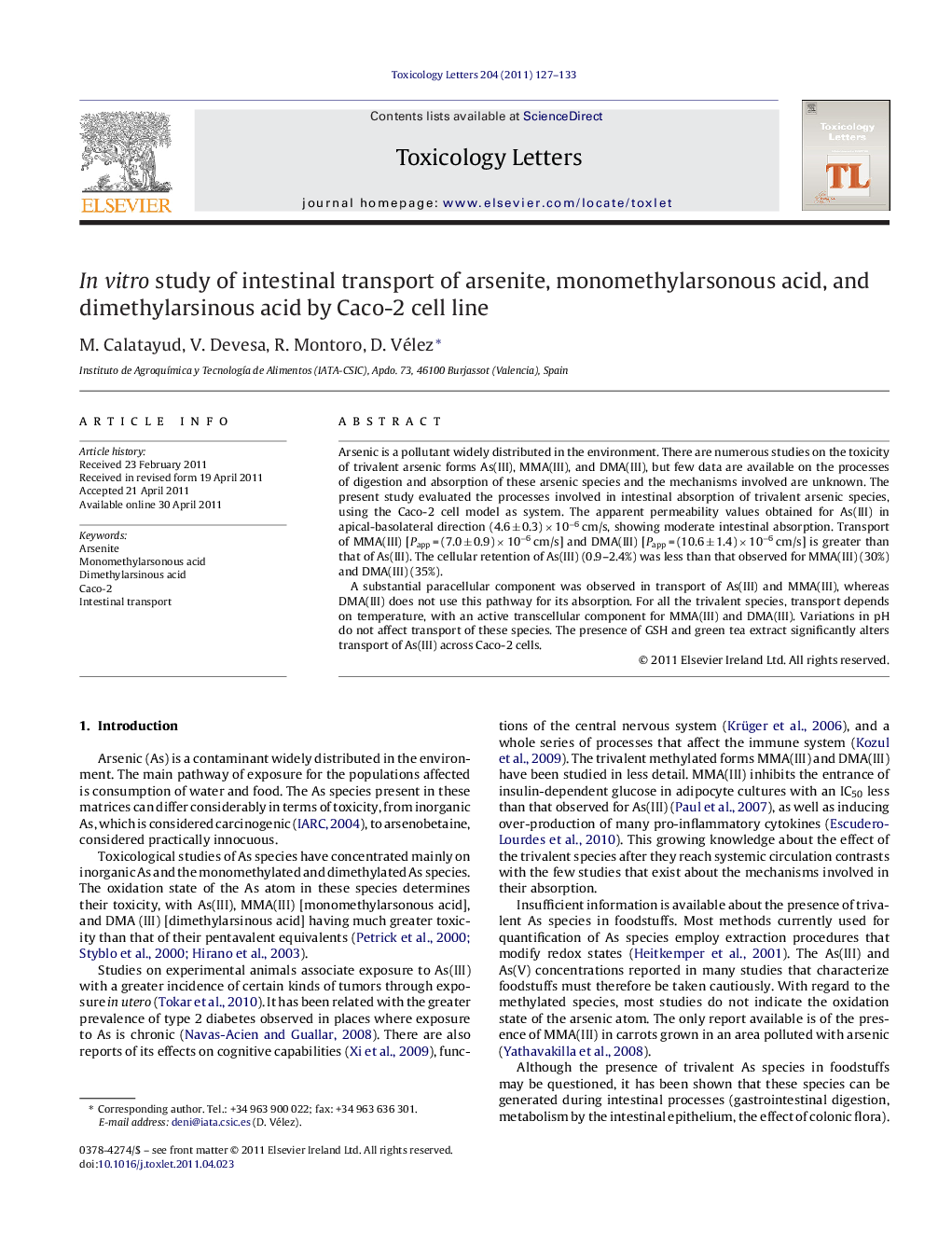| کد مقاله | کد نشریه | سال انتشار | مقاله انگلیسی | نسخه تمام متن |
|---|---|---|---|---|
| 5860875 | 1562637 | 2011 | 7 صفحه PDF | دانلود رایگان |

Arsenic is a pollutant widely distributed in the environment. There are numerous studies on the toxicity of trivalent arsenic forms As(III), MMA(III), and DMA(III), but few data are available on the processes of digestion and absorption of these arsenic species and the mechanisms involved are unknown. The present study evaluated the processes involved in intestinal absorption of trivalent arsenic species, using the Caco-2 cell model as system. The apparent permeability values obtained for As(III) in apical-basolateral direction (4.6 ± 0.3) Ã 10â6 cm/s, showing moderate intestinal absorption. Transport of MMA(III) [Papp = (7.0 ± 0.9) Ã 10â6 cm/s] and DMA(III) [Papp = (10.6 ± 1.4) Ã 10â6 cm/s] is greater than that of As(III). The cellular retention of As(III) (0.9-2.4%) was less than that observed for MMA(III) (30%) and DMA(III) (35%).A substantial paracellular component was observed in transport of As(III) and MMA(III), whereas DMA(III) does not use this pathway for its absorption. For all the trivalent species, transport depends on temperature, with an active transcellular component for MMA(III) and DMA(III). Variations in pH do not affect transport of these species. The presence of GSH and green tea extract significantly alters transport of As(III) across Caco-2 cells.
⺠Paracellular transport of As(III) and MMA(III) in Caco-2 cell line. ⺠Active transcellular component for MMA(III) and DMA(III) transport in Caco-2 cell line. ⺠pH does not affect transport of As(III), MMA(III) and DMA(III) in Caco-2 cell line.
Journal: Toxicology Letters - Volume 204, Issues 2â3, 28 July 2011, Pages 127-133